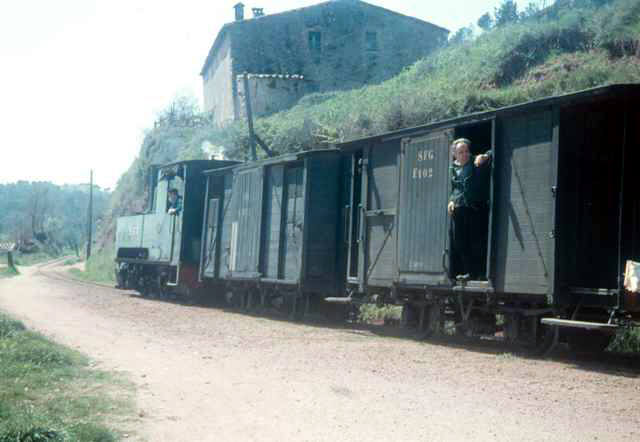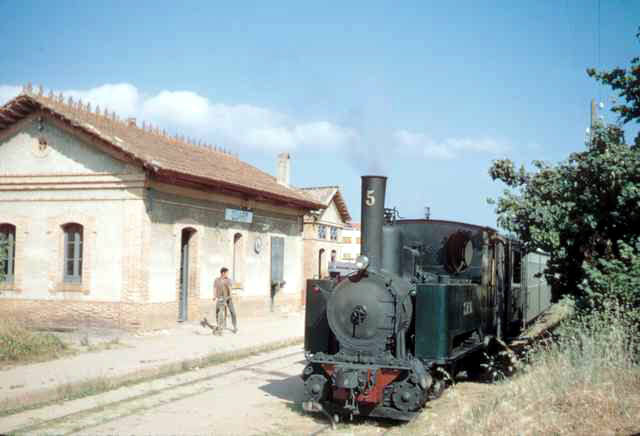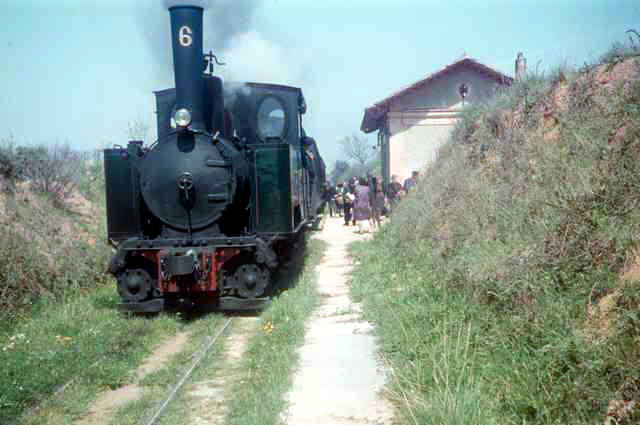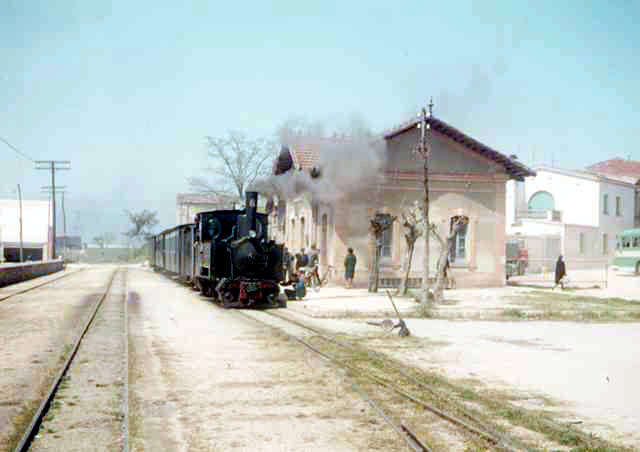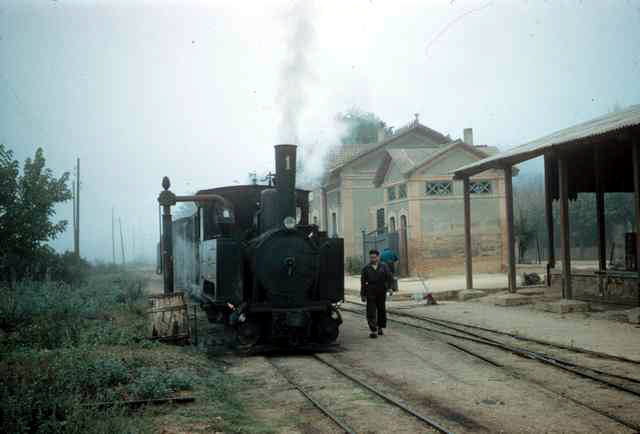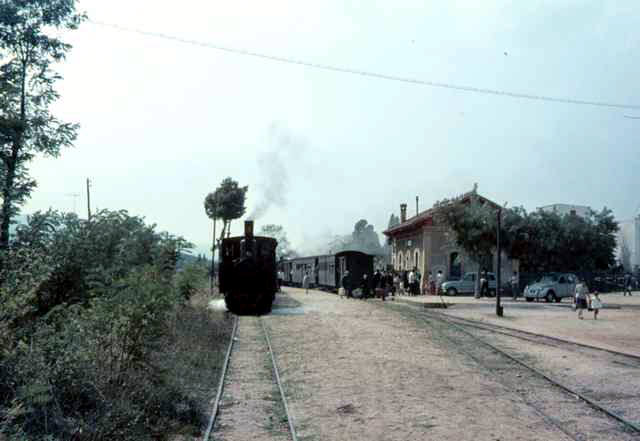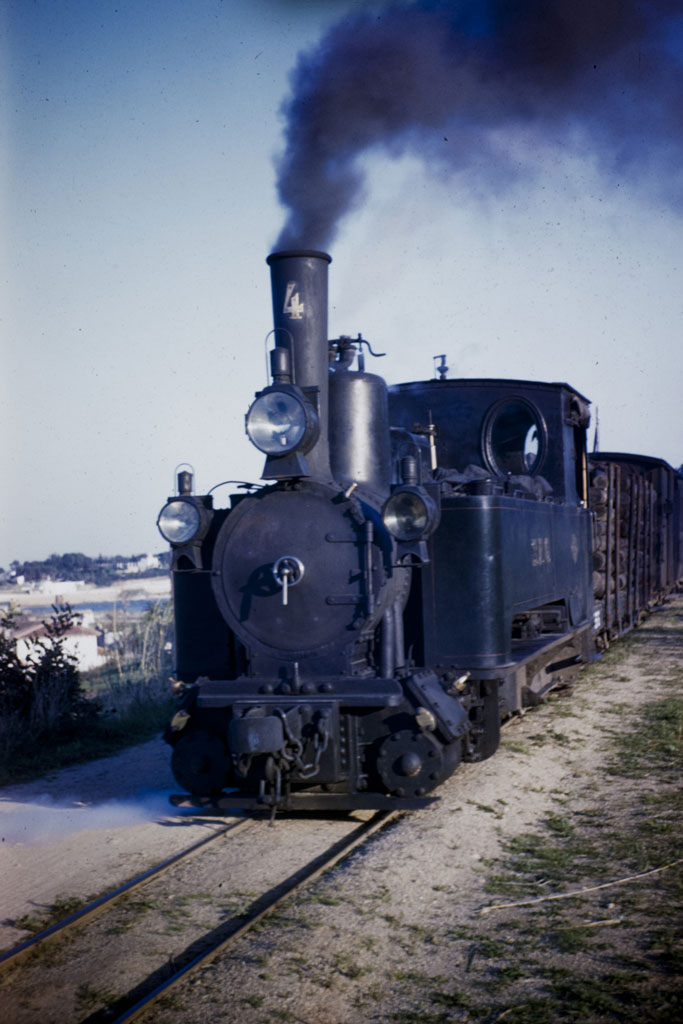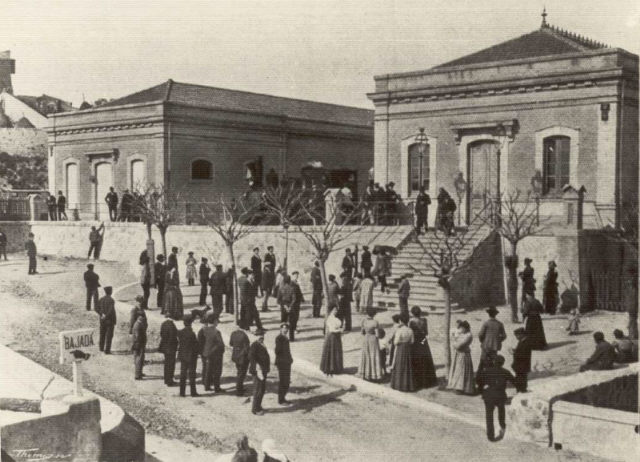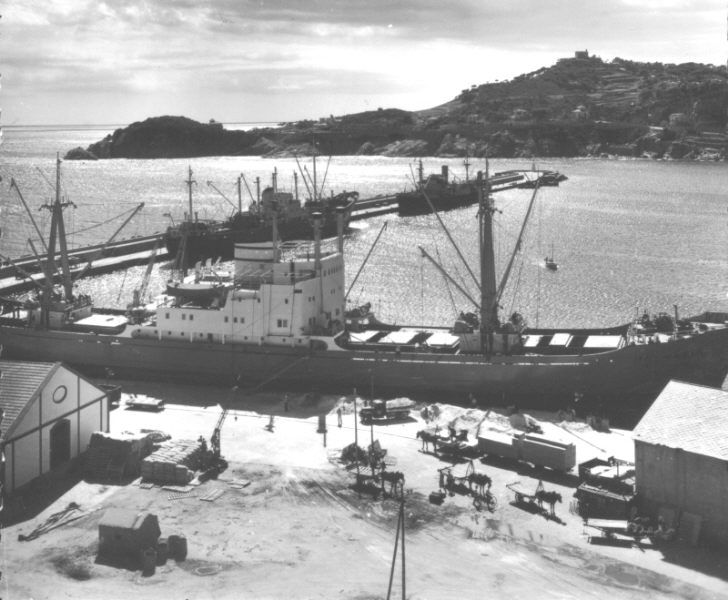All the stations on the line had the same architectural conception that gave them a certain coherence within the same style, despite being different buildings:
Gerona Station
Despite being a first-class station, it never ceased to be a provisional station and had complementary facilities. The project was to build a station like the one at Sant Feliu de Guíxols but economic reasons always postponed its construction.
Photo from the collection of ASAFEGI
La Creueta halt
The Creueta halt, located at kilometre 2,979, which has now disappears, was a very small building with a single entrance on each façade and a gable roof.
Photo taken by Charles F. Firminger on 20 April 1968
Quart station
Quart station was a third category station and was located at kilometre point 6.086. It had a slightly larger building than the rest stops with two doors on the façade and a different arrangement of windows. It also had a gable roof.
Photo by Les Dench
Llambilles halt
The Llambilles halt, located at kilometre 8.448 had only the general track and four buildings. The passenger building was practically identical to the one at La Crehueta, normally used by the attendant, and a 31 square metre annex building was used as a waiting room. The halt was completed with a small warehouse and toilets.
Photo by Charles F. Firminger
Llebrers halt
The Llebrers halt, located at kilometre point 10.770, did not have any buildings, only a platform on the left-hand side depending on the direction of travel from Gerona to Sant Feliu, and only had a signpost.
Cassà de la Selva station
A second category station, located at km. 13.142, it was larger because it had two service tracks on both sides of the main line. Each track was extended on one side to a molehill (the one closest to the station in the direction of San Felíu and the one furthest away in the direction of Gerona). In addition to the station with a four-pitched roof, it had a covered platform for track and works, a covered and an uncovered dock and the typical toilets of the line with a four-pitched roof.
Photo by Charles F. Firminger
Esclet halt
The Esclet halt was located at km. 16.480 of the line, had no buildings, only a platform on the right-hand side depending on the direction from Gerona to San Feliu and only had one signpost.
Llagostera station
Llagostera station was located at km. 20.756 of the line, had two passing tracks and two more for the covered dock on the San Feliu side. The building was practically identical to that of Cassà de la Selva as it was a second-class station. It was the station where the water was loaded into the locomotive tanks, so it had a water castle made of exposed brickwork on the opposite side of the quay. It also had a small turntable to introduce wagons onto a perpendicular track that went to the flour mill.
Photo by Charles F. Firminger
Font Picant halt
The Font Picant / Bell-Lloc halt was located at km. 29.334 of the line. Unlike the other halts, this one had two passing tracks and a buffer stop on the Gerona side. The passenger building was simple with a gable roof and 71 square metres. Away from the station building was the restaurant building, which was built by a private individual but shortly afterwards became the property of the company.
Photo from the collection of ASAFEGI
Santa Cristina station
The third category station of Santa Cristina was located at km. 31.825 of the line, and in addition to the typical toilets it had a well and a level crossing.
Photo from the collection of ASAFEGI
Castell d'Aro station
The third category station of Castell d'Aro was located at km. 34.224 of the line. In addition to the gable-roofed station, it had the typical toilets, a well, a small shed behind the toilets and, further away and nearer the stream, a track and works hut, just in front of the buffer stop.
.
Photograph by Allan Barnes
S'Agaró halt
The s'Agaró halt was located at km. 37.020 of the line and was normally used in summer for bathers. It consisted of a small shed made of metal foundations and a fibre cement roof to provide shade for passengers and a small track and works shed.
Photograph by Jean Paul Viennois
Sant Feliu de Guíxols station
The San Felíu de Guíxols station was first class and was located in the middle part of the town, right in the center town. It consisted of a high-speed station (passengers), a low-speed station (freight), a locomotive depot, covered and uncovered docks, various warehouses and all the buildings related to the workshop, which were opposite the mountain side station.
Photo from the collection of Municipal Archives of Sant Feliu de Guíxols
Branch line to the port of Sant Feliu de Guíxols
The branch line to the port of San Felíu was built later than the line, in 1920. It started at km. 38.710 and a little more than one kilometre down it reached the pass.
Photo belonging to Ignasi Griñon's collection

